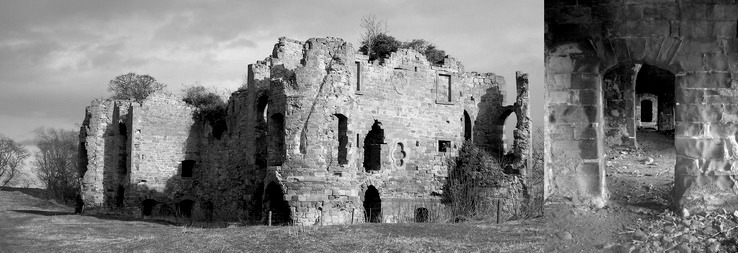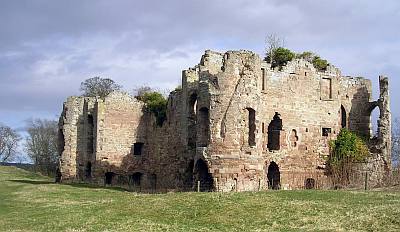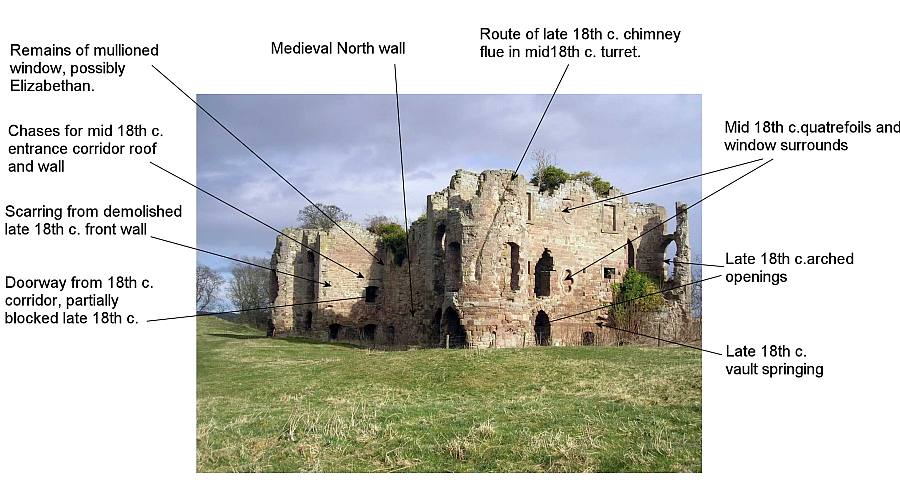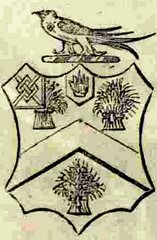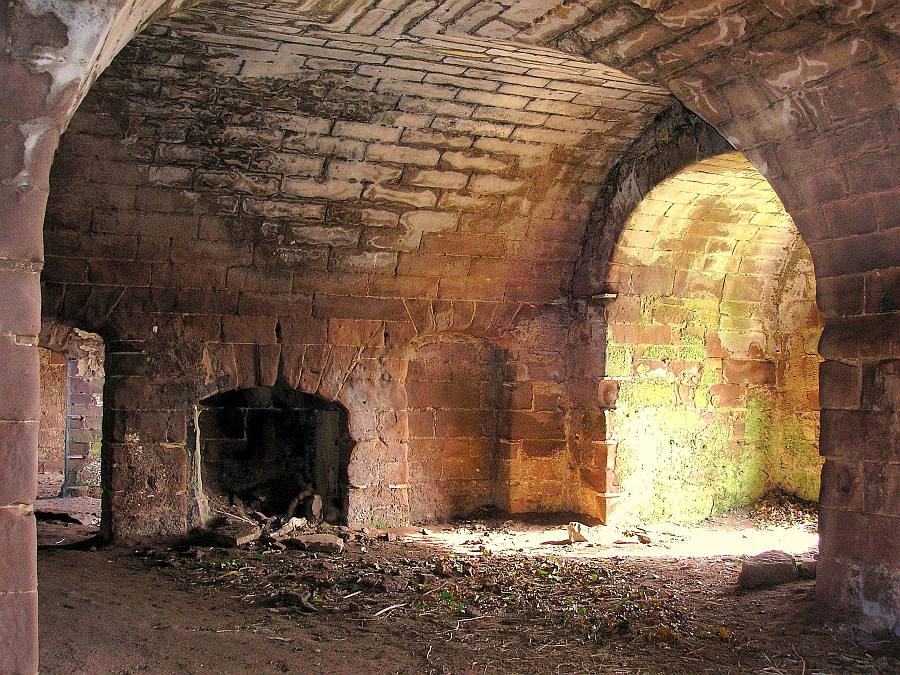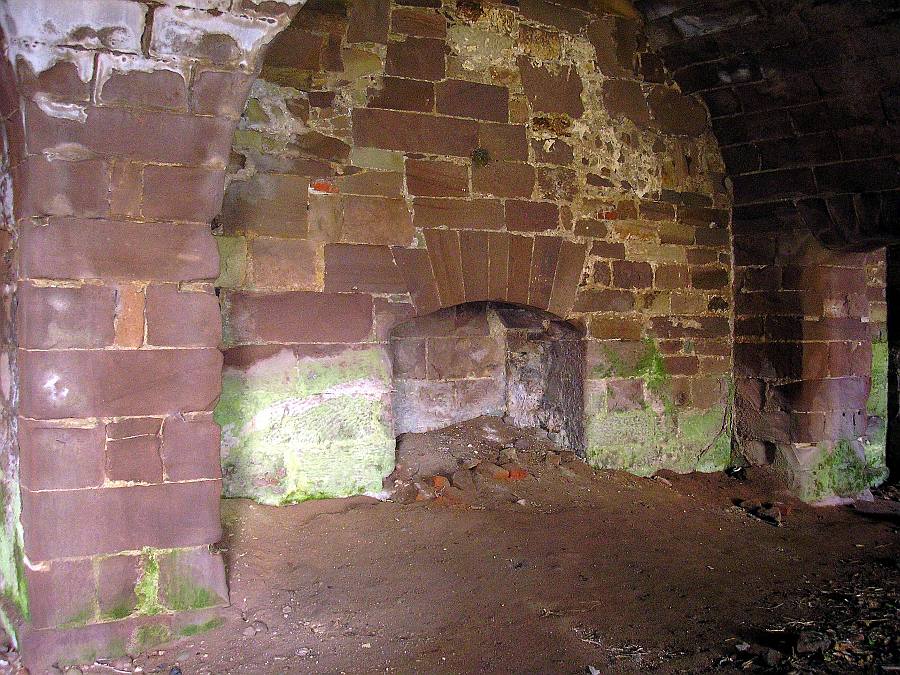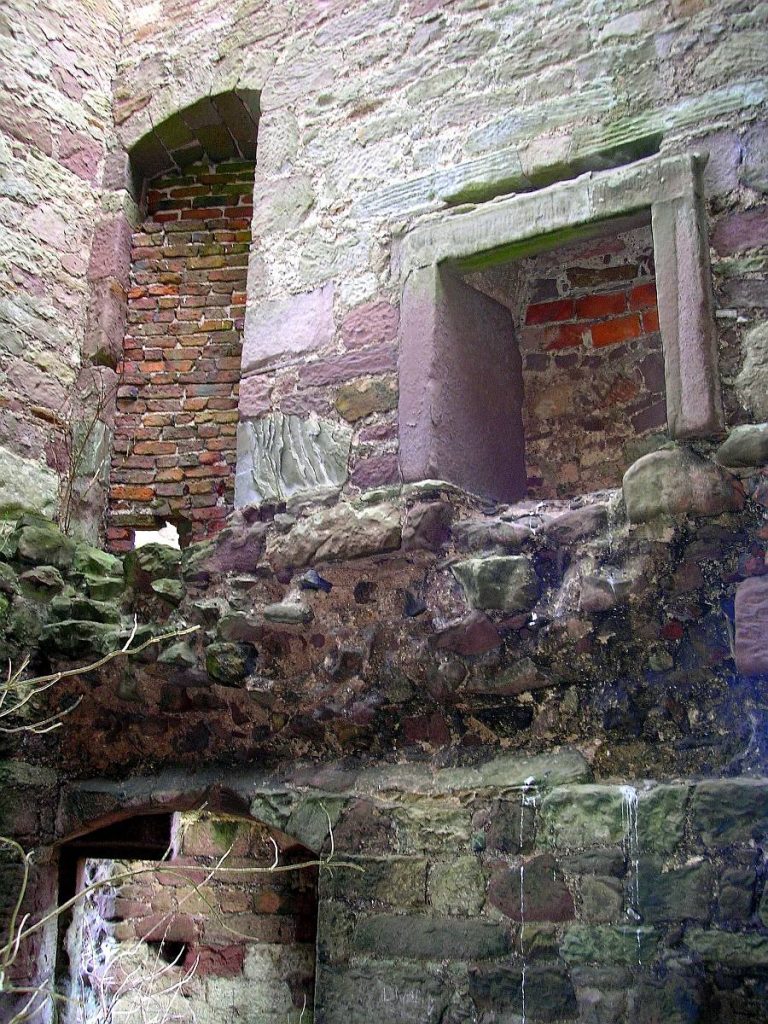The remains of Twizel Castle, in the parish of Duddo, stand on the north side of the River Till, close to the Tudor Twizel Bridge and the modern bridge which now carries the A698 road between Berwick and Coldstream. A half-mile to the north-west of the castle lies the River Tweed and the Scottish border.
It is mentioned in Sir Walter Scott’s Marmion (Canto Sixth, XIX), as the Scots watch the English army crossing Twizel Bridge in preparation for the battle of Flodden:
“And heedful watch’d them as they cross’d
The Till by Twisel Bridge.
High sight it is, and haughty, while
They dive into the deep defile;
Beneath the cavern’d cliff they fall,
Beneath the castle’s airy wall.”
Twizel’s variant spellings through time have been numerous: Twizell; Twyzell; Twysill; Twisel; Twisle. The archaic word “twisel” means a point at which something divides into branches, a fork, and in this context it may refer to the place where the River Till meets the Tweed.
The Brief History of Twizel “Castle” below was written by Dr Catherine Kent (2020). The following section entitled Family Histories was researched by Kevin Graham. Photography by Richard Ormston (Berwick-upon-Tweed).
Brief History of Twizel “Castle”
Medieval
Twizel has been altered over the centuries by its many owners, and all have been determined to retain the core of historic masonry which defined it as an ‘ancient seat’. This core was a two-storey hall house, probably built by the Redel family, lords of Tillmouth who purchased the Twizel estate in 1272. William Redel was constable of Norham and High Sherriff of Northumberland and possibly the subject of the effigy in Norham Church. Masonry from this phase can be seen near the base of the north wall.
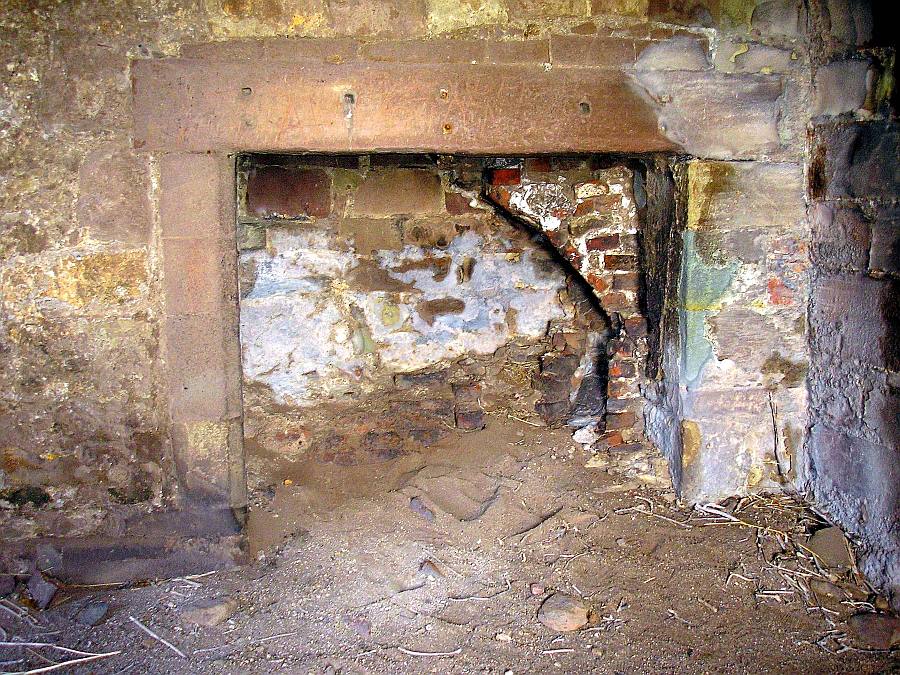
Vault 1 (E vault), N wall. Mid 18th-c. fireplace inserted in opening of late-medieval fireplace. © Richard Ormston.
In the 15th century the house passed to the Herons of Ford, who added a tower on the site of the current west wing and a large internal kitchen fireplace, as well as fortifying it with a barmkin (defensible enclosure). Following damage in Perkin Warbeck’s rebellion of 1496 Twizel remained partly ruined.
Elizabethan
By 1537 Twizel was owned by the Selby family. In 1561 it was still described as ‘one part or a quarter’ of a ‘tower, or pele… of auncyent time decayed and cast downe’ but soon afterwards John and Margaret Selby began to restore it. John Selby was Gentleman Porter in the Berwick garrison and by 1585 he was living regularly at Twizel during the summer months. We know little about the house itself at this time but a later document (Berwick Record Office : NRO 1216/F.4) shows that it had battlements and ‘pinion gables’ and a separate ‘little house’ or privy.
Mid-18th century
By the 1760s ownership had passed to Francis Blake (later Sir Francis Blake) who updated his ‘castle’ by demolishing the tower, clothing the building with a ‘Gothick’ masonry skin and adding turreted wings linked by a corridor giving separate access to the hall and chambers. Contemporary drawings of the scheme survive in the Northumberland archives (ZBU 5/6/32-4). Decorative quatrefoils from this phase can be seen on the east and west faces of the current building and the line of the corridor roof can also be seen. The design, however, was severely flawed; the corridor would have been very low and narrow and difficult to waterproof, the medieval stairs were inconvenient and the house was too small for the needs of an 18th-century baronet.
Late 18th century
During the 1790s Blake’s son carried out estate-wide improvements which included Gothicising the remains of St Catherine’s chapel (renamed St Cuthbert’s), creating a carriage-drive round the estate, re-walling Tillmouth House and building the charming gothic dower house outside its gates.
A major part of the work involved encasing Twizel within a huge castellated shell, making it nearly twice the height and with much larger wings and a new entrance hall. A sketch by Turner dated 1801 shows it in this form although not yet at its full height (https://www.tate.org.uk/art/artworks/turner-twizel-castle-above-a-single-arched-bridge-d02600). Contemporaries disliked it; James Raine, the antiquarian, judged it to be ‘a melancholy memorial of the most extreme want of taste and the most needless profusion… the old tower was suffered to stand only that it might be buried in the centre of the present fabric.’
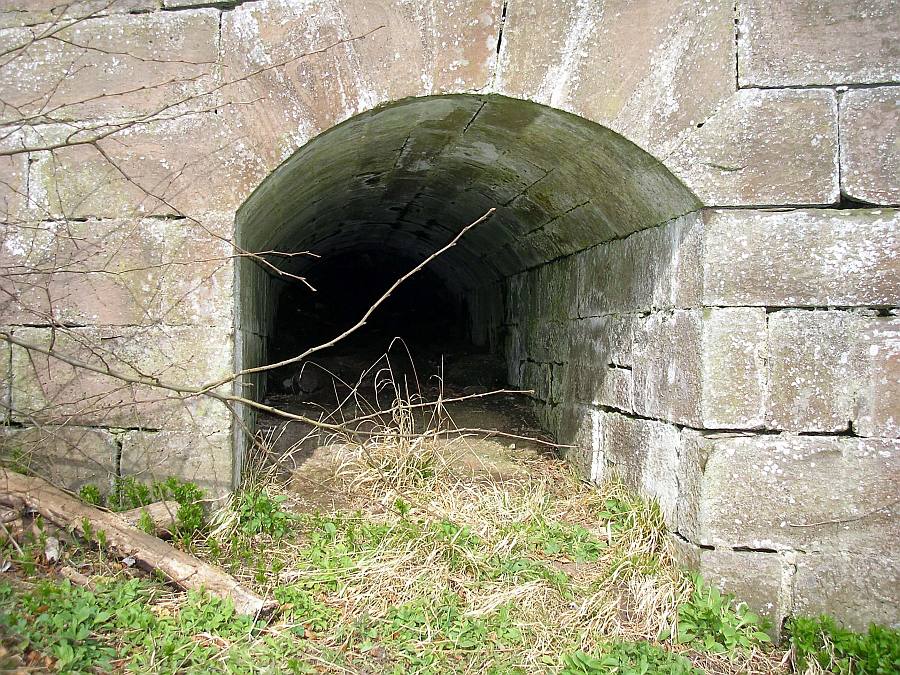
Hidden in the undergrowth on a steep embankment near the top of the path leading from the bridge car park is this arched structure which supported the mid 18th-c. carriage drive up to the castle. © Richard Ormston.
19th century
The Blakes’ family problems meant that this huge, unloved new “castle” remained incomplete until the 1860s when, after a chancery suit, it was inherited by Eleanor Stag Blake (see Family Histories below). She was determined to complete the building before her eldest son Francis Douglas Blake came of age. This involved some major alterations – for example the first floor entrance hall, already becoming outdated in 1800, had to be altered to provide a ground floor entrance. The result was the huge structure seen in the contemporary photograph below.
Unfortunately, although Mrs Stag Blake spent a large proportion of her son’s inheritance in completing the work, Blake did not like the house and could not afford to run it. By the time he inherited it in 1880 his estates were losing money; BRO 129 (Berwick Record Office) includes letters to his steward which mention selling houses, letting a farm, shutting his stables and moving his mother from Cheltenham to a cottage on the estate. BRO 129/8/11 includes offers to rent or buy ‘Twizel Castle’, in one case for use as ‘a Hydropathic Establishment’, but by 1881 he had decided to demolish it and re-use the stone for his new house at Tillmouth.
By this period however the general public was beginning to feel that it had some say over the fate of privately owned historic buildings. Following a spirited newspaper correspondence in the Berwick Advertiser (e.g. 5 November 1880) Blake and his architect agreed that the structure would be demolished except for ‘that part which is still existing of the original Castle now within the walls of the modern building’ (BRO 129/6/1). Blake built a new siding at Twizel station to load the stone, which was used by the railway company for its own buildings; the distinctive red sandstone can still be seen in houses along the course of the line.
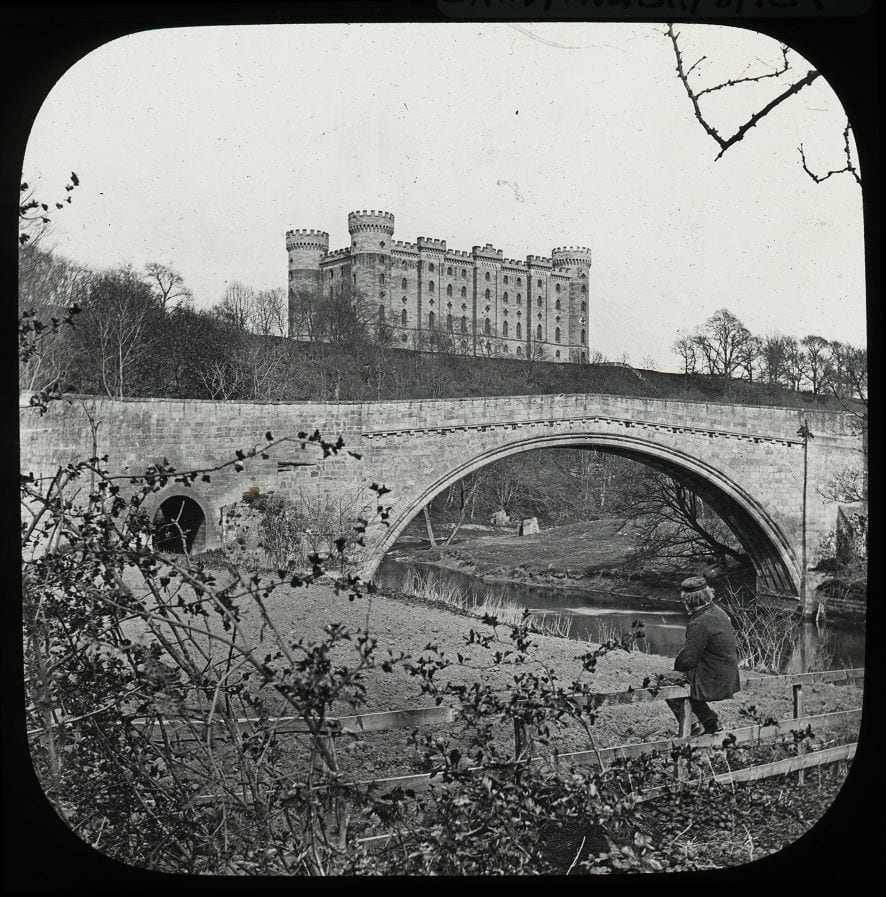
This wonderful image of the extra-large version of Twizel Castle, with Twizel Bridge (built 1511) in the foreground, was taken before its demolition in 1881. Photo courtesy of Coldstream & District Local History Society.
Further pictures of Twizel below
Family Histories
The political and family histories of John Selby, and Sir Francis Blake, 3rd Baronet, are comprehensively covered in The History of Parliament website; links to these are provided at the foot of the page.
Below is a brief history of the life of Sir Francis Blake, the 3rd Baronet, of Twizel Castle, and his sister Eleanor Ann Blake.
Sir Francis Blake (1774-1860)
Sir Francis Blake, third Baronet, of Twizel Castle, in that part of the county of Durham near Berwick-on-Tweed, was the eldest son of Sir Francis, the second Baronet, by his wife, Elizabeth, only daughter of Alexander Douglas, Esq., Chief of the British settlement at Bussorah [Basra], in Persia. He was born in 1774, and succeeded his father as third Baronet the 22nd of May, 1818. He was M.P. for Berwick from 1826 to 1834. He married Miss Jane Neale, which lady died in 1827; but he has had no issue, and at his death (*which occurred recently at Twizel Castle) his baronetcy became extinct, his two brothers having also died issueless. His only surviving sister, **Mrs Bethel Earnshaw Stag, of Holmforth [sic], Yorkshire, who is a widow, inherits his vast estates; she has taken, or is about to take, the surname of Blake. Mrs Stag has had two daughters, the elder of whom married and is deceased, and the younger died unmarried. This family is a branch of the very ancient house of Blake, Baronets, of Menlough Castle, in the county of Galway, and boasts of having had among its members the famous Admiral Blake. Sir Francis Blake, the first Baronet of Twizel, obtained his baronetcy in 1774, was an ardent supporter of the house of Brunswick, and did the Government good service in 1745. (Obituary of Eminent Persons, The Illustrated London News, November 3rd, 1860.)
*Sir Francis Blake died at 15 Sloane Street, on the 3rd of August, 1860, in Middlesex.
**His sister’s name was Eleanor Ann Blake; following protocol she is named in the above text as Mrs Bethel Earnshaw Stag.
The will of Sir Francis Blake, 3rd Baronet of Twizell Castle, 27 December 1860.
Effects under £2,000
The will with two Codicils of Sir Francis Blake, late of Twisel Castle [sic], and of Tilmouth Park, both in the County of Northumberland. Baronet deceased, who died on the 3rd of August, 1860, at 15 Sloane Street, in the County of Middlesex, was proved at the Principal Registry by the oath of Helen Blake, of Handcross House, in the County of Sussex, widow, one of the Executors. *Added in handwriting on the official register reads “Administration (with Will) of Goods unadministered passed at the principal Registry December 1876.” (England & Wales, National Probate Calendar (Index of Wills and Administrations), 1858-1995.)
Family Notices of Sir Francis Blake, 3rd Baronet, and his wife Jane
Marriage
Francis Blake married Jane Neale, on the 22nd March, 1821, at St Mary’s Church, Lambeth, Surrey, England. (England, Select Marriages, 1538-1973. Surrey Marriages.)
Obituary
In Sloane Street, 3d inst. Jane, wife of Sir Francis Blake, Bart. M.P. (Obituary: Morning Post, London, Wednesday, April 11th, 1827. Issue: 17573.)
Eleanor Ann Blake, daughter of Sir Francis Blake, 2nd Baronet.
Baptism
Eleanor Ann Blake, was baptised in July 1782, at St Giles in the Fields, Holborn, Camden, London, England. Daughter of Sir Francis Blake, 2nd Baronet, and his wife Elizabeth Blake. (Ancestry: London, England, Church of England Baptisms, Marriages and Burials, 1538-1812.)
Marriage
On Saturday last, at Knaresborough Church, by the Rev. Francis Reed, Bethel Earnshaw Stag, Esq., to Miss Ellin Blake [i.e. Eleanor Ann Blake], youngest daughter of Sir Francis Blake, of Twizel Castle, Bart. (Marriage: London Courier and Evening Gazette, 26 February, 1805.)
Obituaries
Bethel Earnshaw Stag
In London, on the 23d instant, Bethel Earnshaw Stag, Esq., of Rampsbeck Lodge, in this county. (Obituary: Carlisle Journal, Carlisle, Cumberland, England, May 4, 1839.)
Eleanor Ann Blake (Stag)
On March 12th, at Brighton, Eleanor Ann Blake, widow, of Tilmouth Park and Twizel Castle, Northumberland, in her 88th year. (Obituary: The Brighton Guardian, Wednesday, March 17, 1869.)
The History of Parliament
A comprehensive political and family history of both Sir John Selby, and Sir Francis Blake, 3rd Baronet, appear in the ‘The History of Parliament’ website. Click on title to view.
Sir John Selby (c1574-1636), of Berwick-upon-Tweed, Northumberland.
https://historyofparliamentonline.org/volume/1604-1629/member/selby-sir-john-1574-1636
Sir Francis Blake, 3rd Baronet (1774-1860), of Tilmouth Park, County Durham; Knowle Green, Staines, and 15 Sloane Street, Middlesex.
https://historyofparliamentonline.org/volume/1820-1832/member/blake-sir-francis-1774-1860
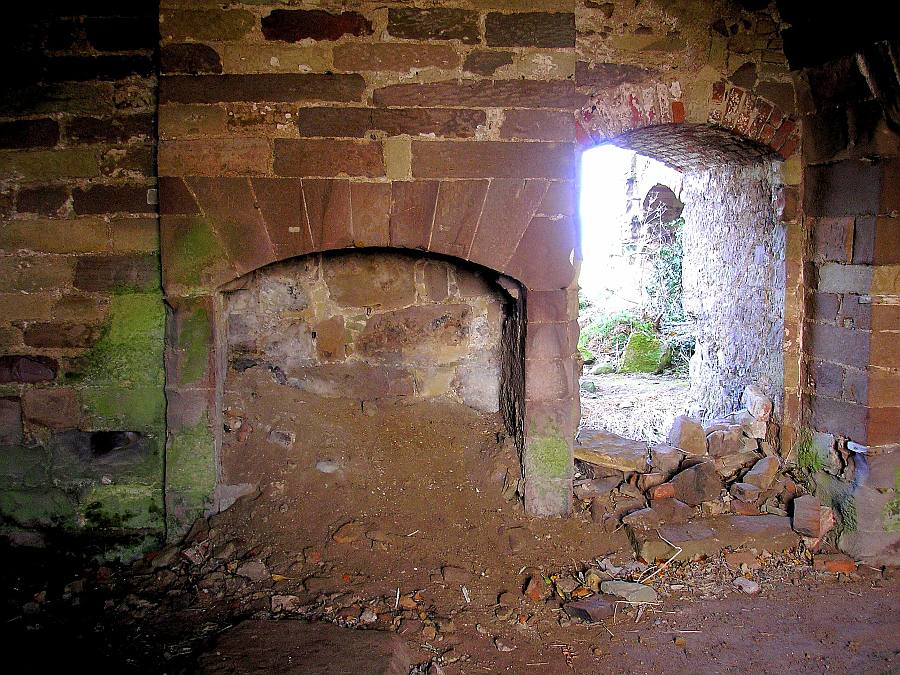
Vault 4, N wall. Late 18th-c. fireplace, backing onto medieval masonry. Vertical joint on the left is from a blocked 2-centred arched doorway visible outside. Doorway to the right is a insertion into the medieval wall, giving access to the passage beneath the new entrance corridor. © Richard Ormston.
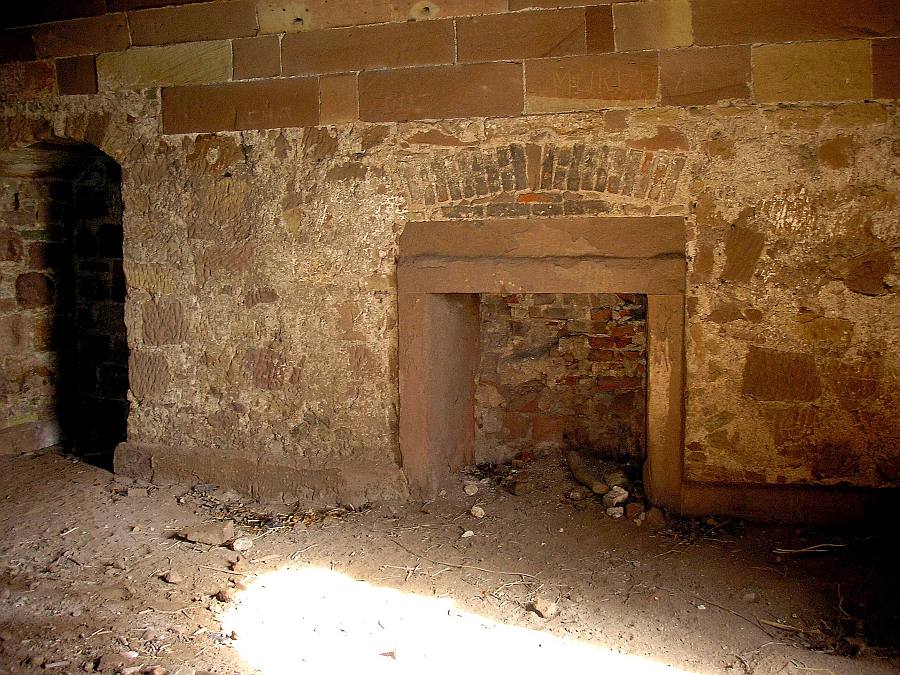
Vault 5 (W vault), E wall. Mid 18th-c. fireplace. Late 18th-c. vaulting built into medieval wall. © Richard Ormston.
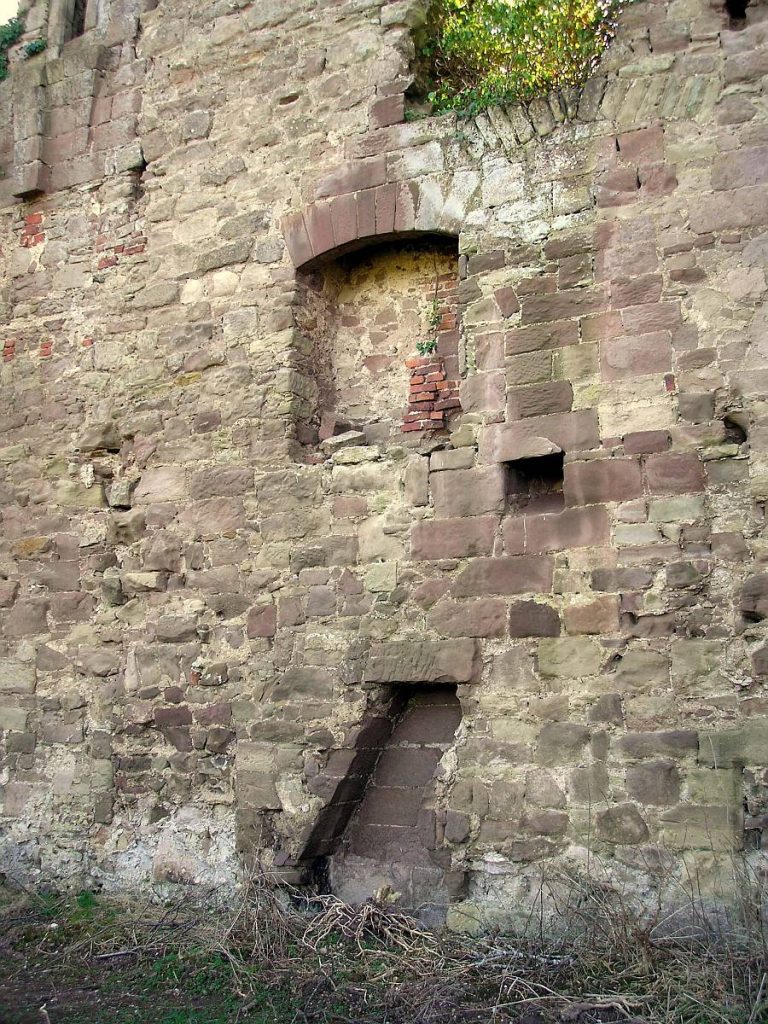
North wall. Some medieval masonry. Top right, the shallow relieving arch over the site of the medieval entrance door (possibly rebuilt 16th c.). Below, a late 18th-c. fireplace with another at ground level. A square hole gives access for sweeping. Just visible at top left, one of the mid 18th-c. decorative loops, with just below it remains of late 18th-c. vaulting. © Richard Ormston.
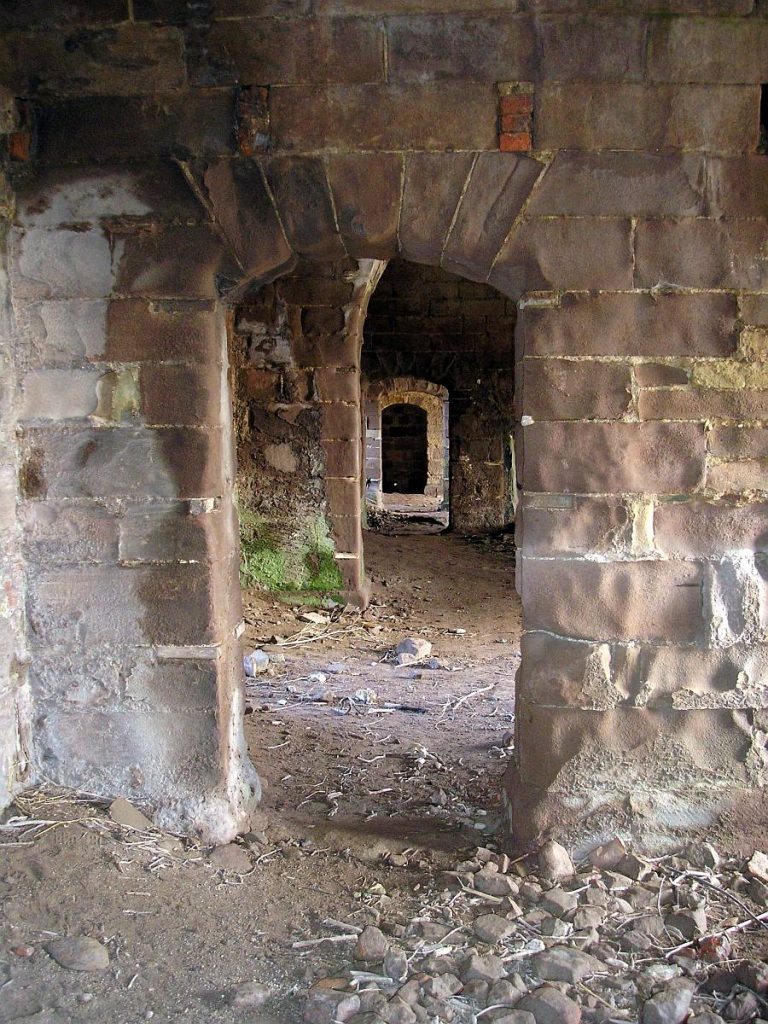
View through the late 18th-c. century kitchen vaults. The small bricked-up openings were for floor joists for a high-level storage area. © Richard Ormston

